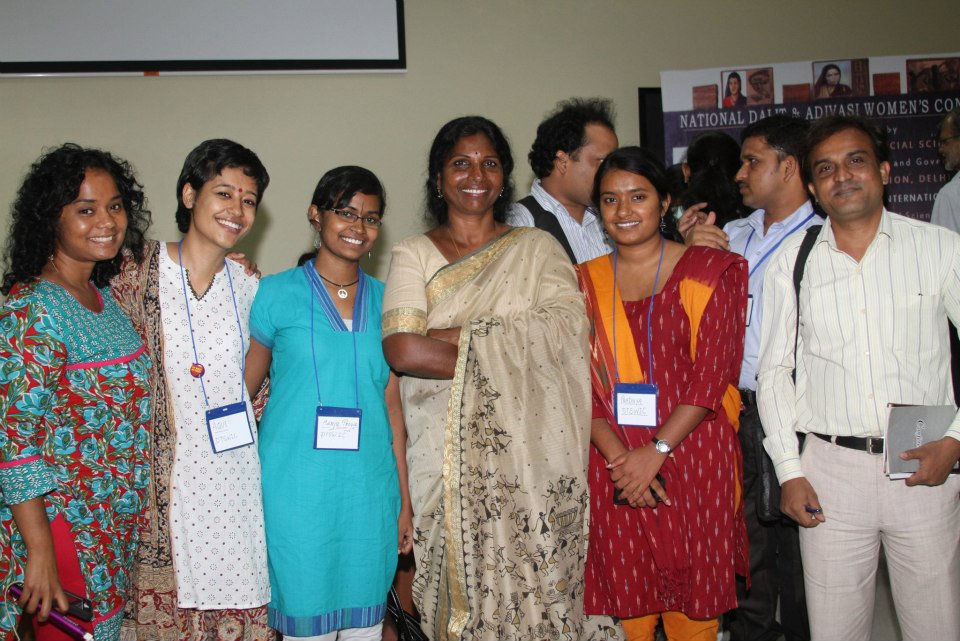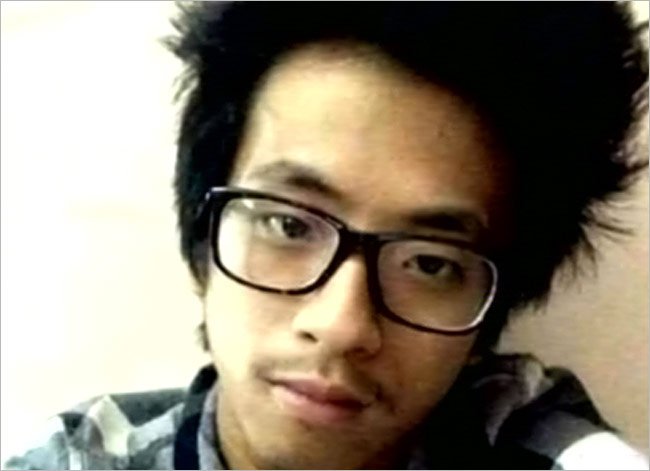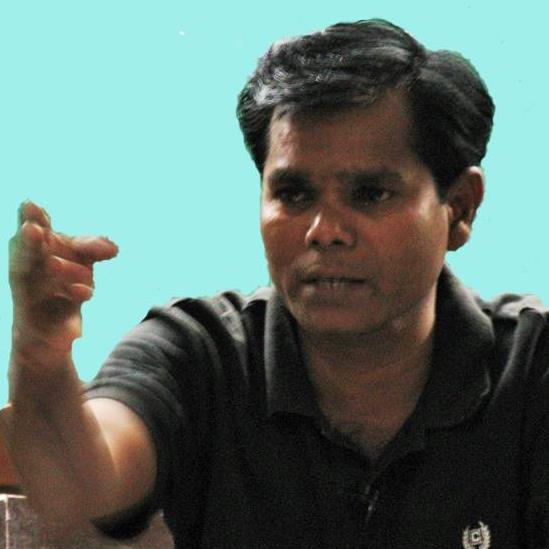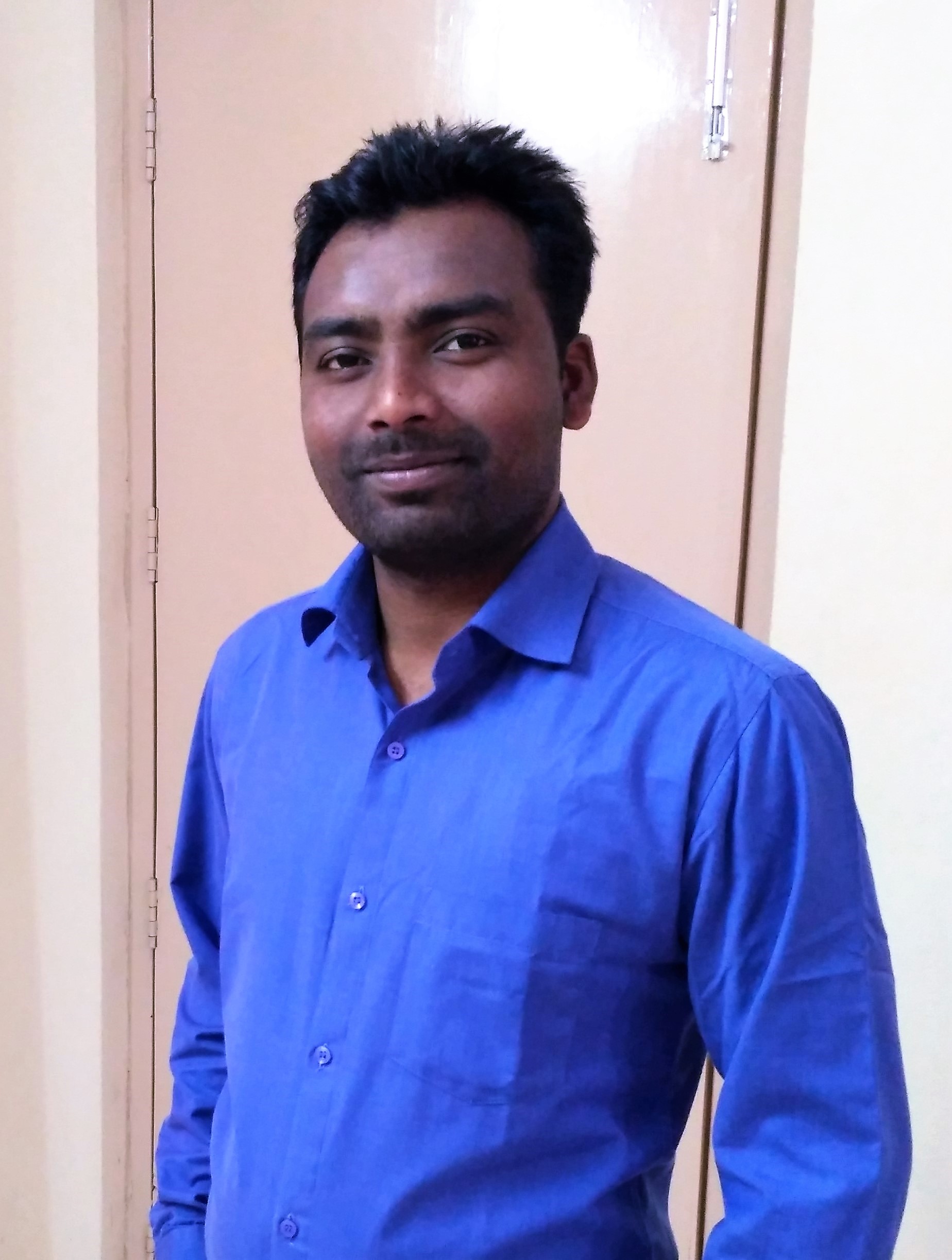P. Sivakami, a role model for young dalit adivasi and bahujan women, spent two days at the National Dalit and Adivasi Women’s Congress interacting with students and fellow activists. She is an ex-IAS officer, writer and politician who founded a political party, the ‘Samuga Samatuva Padai‘, to work ‘on the principles of Dr Bhim Rao Ambedkar, as a forum for social equality’. She is also the founder of Dalit Land Rights Movement in Tamil Nadu.

Sivakami talks to Kuffir in this part of the interview series taken during the Dalit and Adivasi Women’s Congress held at TISS, Mumbai, on Feb 15-16, 2013. She discusses the issue of land distribution and Dalits, the Dalit Land Rights movement in Tamil Nadu and Ambedkar’s own struggles for land rights for Dalits in Maharashtra and in the Hyderabad state.
As mentioned earlier, this is the first part of a series of interviews conducted with many Dalit, Adivasi and Pasmanda women leaders during the Congress. Round Table India and SAVARI shall regularly publish the rest of the interviews in the weeks ahead.
~
{youtube}zNc90Qga0_A{/youtube}
Kuffir: You have been looking at the land question, you have brought a new perspective (to the issue), could you tell us what do you think is the solution, recognizing that most of the Dalits have been denied the right to land?
Sivakami: India is an agricultural country, more than 70% people are involved in agriculture. Out of which more than 80% of Dalits are still in agriculture, as agricultural laborers. In the case of Tamil Nadu, take for example, 11% of the Dalits have only 7% of land, and the 7% is not irrigated, wet lands; it is all dry lands. Since there is no market for dry crops, they are not even able to cultivate that. So looking at the situation, on the one hand the government talks about poverty alleviation: (as part of) poverty alleviation most of the schemes are (centred around) distribution of rations, that is rice or wheat, and some freebies to the Dalits. Other than that, I don’t think they have any worthwhile scheme.
Therefore, all these years they have been running the PDS at the cost of probably 70,000 crores per year, maybe this year it will be more. In the name of the poor they procure paddy or wheat from the farmers at a low price, so neither the farmers benefit nor the Dalits, or the landless laborers. Therefore, land transfer will be an effective policy as far as poverty alleviation is concerned, and (will) also create an equitable society.
On this basis, because agriculture will be economically viable only if land is distributed to the poor, because they will directly engage themselves in agriculture (and) as a result you don’t have to pay wages. But now, this is the time to revise our land policy. Earlier, because land was the only property that the government could think of, now other industries have come, technology and many things have become properties, shares (and stocks) and all that. So land should not be treated as a property, it should be treated as a source of livelihood.
On this basis, we need to revise the existing laws. The land ceiling act, says that a family of five can have 15 standard acres. It varies from place to place depending on the nature of land. But was this 15 standard acres arrived at after a discussion? If a discussion had taken place, will the government be transparent enough to reveal that to us? Because, if the discussion had taken place, they would have discussed (there are) so many landless agricultural laborers, total agricultural production is this, and very few are controlling the land, therefore, how much is to be distributed? And they would have also discussed, what is the optimum size (of land) that a family can hold for agricultural purposes?
But in British India, I remember reading the Cambridge book on Indian economic history – in that they said, the British were trying to impose (a limit of) 5 acres for each family of five. But how (has) our government decided (on a limit of) 15 standard acres, that is 45 acres literally for a family of five? What will the others do? We really need to know, what discussion went on behind this Act.
Secondly, if there was no discussion (then), at least we should initiate discussion: what should be the optimal size now, in the present standard of prices and economic growth etc. And whether people who are engaged in government jobs earning more than a lakh or more than 2 lakhs a year should retain agriculture as their occupation if they are not fully dependent on it. And also they should review non-resident-indians those who have agricultural lands: whether it is worthwhile to leave the ownership with them. And also big companies, commercial ventures. They earn more income, they have no business to keep agricultural lands. Because most of the lands are held by companies, these companies earn profit in their businesses and equate (declare) losses in agriculture and evade income tax. By applying these norms, I am sure we will be able to get enough lands for distribution. Because the optimal size will accommodate normal agriculture, for fruit trees and other things they can relax the standards, but depending on the quality of land, the particular crop pattern. It is quite possible.
Kuffir: There is also the larger issue of social acceptance because membership in the community seems related to land ownership (in rural India).
Sivakami: Another thing is the agriculture lobby is too weak to bargain for anything for themselves. Because it is (held by) fewer people, if it is distributed to the landless laborers, it will be a bigger lobby.
Kuffir: They had tried to build a peasant-worker coalition through the ages but it has not succeeded anywhere. And the naxalite movement is also a struggle for land. You had, I remember, also referred to Dr. Ambedkar’s efforts to ensure some land distribution.
Sivakami: In 1939, he took a march towards Mumbai, which was kind of against the rally organized by Mr Gandhi. Because he (Gandhi) organized the zamindars and staged a (movement for) non-payment of taxes to the British (Non-cooperation movement). The zamindars are exploiting the landless poor and if they get freedom, the zamindars are going to be the rulers, so we can’t really have freedom for the people.
So he (Ambedkar) organized all the landless laborers against the zamindari system itself. A strong crowd of 20,000 people attended the conference, much more than what Gandhi had organized. That way, immediately after the rally, he joined hands with the left movements. After the rally the abolition of zamindari act was passed. Another big rally that he had organized, the biggest in the whole of Asia (according to Gail Omvedt), for land took place in (the region of) Hyderabad when the Dalits’ lands were usurped by the caste hindus, these lands were given by the erstwhile Nizam of Hyderabad.
So Ambedkar toured around Andhra Pradesh for a year, collected more than a lakh of people and ultimately the land was returned to the Dalits. So these are the two important land issues that he had taken up.
Kuffir: After Ambedkar, concurrently during the 1940s there was also the Telangana peasants’ struggle which was also for land. Nearly 20% was actually owned by the Nizam himself. And most of the major caste hindu landlords were called jagirdars. Some of them owned as much as one and half lakh acres. In every village there used to be an upper caste landlord, usually a Reddy or a Velama, called Dora. The 1946-51 Telangana struggle was about that. After that the Naxalites have carried on the legacy in a way. In Bihar, there has been some consolidation of the Yadav and Kurmi rights on land and also in UP to an extent. In Telangana there has not been a radical redistribution but it has helped the Dalits in the self-respect movement. But your approach has been radically different from the Naxalites’ approach to land or of any other (movement), like the Boodhan movement’s approach to land. Your approach is to straightaway negotiate with the state or to make it rethink its policy?
Sivakami: Because the landless poor constitute the majority here, so I am sure if we can convince them, by approaching each of these families and then make them take part in our struggle, I think the government has to give in. Because of Ambedkar’s movements and to an extent the liberalized policies; you know, government had to enact the Land Ceiling Act, Land Reforms Act, Land Tenancy Act, all these acts are basically to set right the land administration and also (for) equitable distribution of land. But somehow it got lost, because the Congress lobby had all the landlords in their party, they saw to it that these land reforms were not carried out. And still they hold on to the land though they won’t cultivate it because of the casteist domination. They don’t want Dalits to have land rights.
Kuffir: Absentee landlordism has increased, tenancy has also increased, 40% of Andhra farmers are giving up farming and the Dalits are getting into the tenancy of cultivation of these lands. And they are not making much, (facing) double the problems because of the general distress.
Sivakami: In the case of Tamil Nadu, whatever lands the Dalits had got from the British as Panchami lands, those were also grabbed by the caste hindus and the government is also not taking any action to retrieve them and give them back to the Dalits.
Kuffir: This was in the 1870s?
Sivakami: Yes, and there is the wide thinking in circulation, purposely created by the dominant communities, that agriculture is not profitable, it is not worthwhile. So what is the alternative? 70% of the people still depend on agriculture and we have to do agriculture, but they are propagating that it is not viable. This is mainly to drive Dalits away from land.
Kuffir: Do you connect land and Dalits only in terms of livelihood or also with the other issue of self-respect; it is also connected, I think.
Sivakami: Actually, I don’t think so, because self-respect can be got through education, got through other modes of property and just because I want to earn self-respect I can’t have land. It is not good for the land, you know. So, land is after all so essential, and it is a natural resource, it cannot be kept idle, or it cannot be wasted just because we want to have self-respect. Those who love agriculture, those who depend on agriculture, and whose sole income is from agriculture, they will really look after land and land also will yield well in their hands. In that analogy if you look at it, Dalits are better deserving people apart from other landless agricultural laborers. So it is better to be in their hands.
Kuffir: The Panchami land issue which you have have taken up since 2004, could you tell us the details of the case and how the struggle has progressed until now?
Sivakami: Actually, there was a police firing at Karanai (in 1994), when an individual was trying to get back his land, it was a Panchami land. So that triggered the Panchami land movement, though people in different locations were independently acting on their own. But this trigerred the panchami movement in Tamil Nadu. A retired IAS officer Mr. Karuppan started the ‘Save Panchami Land’ movement.
But it was an NGO effort, the funding was from the dominant castes; one of his partners saw it to that the programme did not take off, it was stopped abruptly. We realized the importance of panchami lands. Throughout Tamil Nadu, there are people who lost their lands to the dominant castes, therefore we thought we should start a movement. It is called the ‘Dalit Land Rights Movement’. And we organized conferences first; before organizing conferences we went to the people and explained to them (the movement’s importance). Because when you talk about panchami lands, those who have panchami land and those who lost only could be collected for the struggle, others would not participate in it.
So we had to put (project) it as ‘Dalit land rights’ movement, including (the demand for) 2-5 acres of land to each Dalit family of five. With that we could collect more people and we had a conference. Soon we followed it up (with more initiatives) because the participation level was too low in a conference, because each one of them cannot participate. We wanted to involve as many as about a lakh of people.
So, in each district we fixed a day so that they (each of the participants) can take a petition and submit it to the collector saying that ‘we are a family of five, we depend on agriculture and the government should allocate five acres of land to us’. This was a uniform request, they wrote it themselves, brought it to the collector and handed it over, all across TN.
This sent a message to the Government. Later we followed it up with district-wise seminars, mandal conferences. And subsequently we decided, because (the average) district headquarters is too far from a village: so people living in villages, (we decided) they can go up to the taluk office (and submit their petitions). So we planned (such movements) in 68 TN taluks. We set a target of 5,000 (participants in each taluk), so totally we had a 2, 50,000 people handing over petitions. Also there was a fax struggle — from every nook and corner people were trying to reach the chief minister’s fax.
Kuffir: This was in the nineties or 2000s?
Sivakami: 2004-5, 2006 also.
Kuffir: That’s when you got involved in this struggle?
Sivakami: Yes, we started this movement. I was the founder of this movement, called the Dalit Land Rights movement. In 2006, one of the political parties — that is DMK led by Mr. Karunanidhi — they announced in their manifesto, that if they come to power they will give 2 acre land (to each landless family).
Kuffir: They actually announced?
Sivakami: They actually announced.
Kuffir: Without reference to the Panchami lands which are due (to be reinstated to the Dalits)?
Sivakami: Yes, they did not care about it, (but) because they would like to engage us in the election process (they made the announcement). Finally (they) won’t give anything. But anyway, when he announced, rest of the political parties started talking about it. Hitherto, land was not a subject, was not a centre of attraction. It was never a political subject. It was considered that with the land reform act, everything had been distributed and (there was) nothing more to talk about on land.
We reopened the dialogue. Every political leader had to speak about distribution of land to the poor. So finally when the election results were declared, and Mr. Karunanidhi formed the government, he announced 2 acres of land to the poor (to each family). The scheme went on till Dec 2007, for one and a half years it was implemented. About a lakh people got land, less than 1 acre (each), he had said 2 acre. What he did was (different from what we had planned). Our aim was to change the land ceiling act, amending the land ceiling act, bring down the ceiling limit and then (going for) redistribution. But in his view, he said: land is available so we will give. Wherever government lands were cultivated or encroached upon, he regularized that and gave pattas.
Kuffir: Only paper work.
Sivakami: Yes, paper work only, there was no real work done. When he was questioned, why he could not implement the scheme, he said: where is the land? Show me the land?
Kuffir: That is a vital question, always. Even in Telangana also, people say, upper caste landlords, keep saying: where is the land, we have distributed all during the 70’s and the Telangana peasants’ struggle also distributed land. Coastal Andhra also has a similar situation, Tamil Nadu also. The land is much fertile and irrigated in the coastal districts, the four districts of Guntur, Krishna, East and West Godavari. There too the land distribution is worse than in Telangana, the pattern is much worse. Even where the Malas are educated they still have no lands, none of them have lands. 90% of them are still landless laborers. Where is the land?
Sivakami: So we can find land. When I say this, see you (the dominant castes) have been given land by the British; because of Permanent Settlement Act everyone got land. That was also free of cost, because you were leasing lands from the zamindars and cultivating, the same extent of land was given to you. Then independent India realized that too much land was given and therefore it was to be taken back and given to the poor.
Now we need to ask a pertinent question (of dominant caste landholders): Are you still a farmer? Have your children not gone to school or colleges? Have they not become doctors and engineers? If your offspring, your heirs have become doctors, engineers occupying important professions, what is the need for having land? It’s an ancestral property? No, land cannot be considered as an ancestral property. You have to really work and cultivate, it has to change hands. It is high time.
It needs to change hands, at least now. Everyone wants to become doctors and engineers and then still hold on to land, how is that possible?
Kuffir: NRIs are also buying large big pockets of land.
Sivakami: Yes, companies, engineering colleges, educational institutions, religious institutions — don’t leave that because temples have lots of land. See, we can understand, those days when there was no source of income for the temple, land was given, they cultivated and they ran the temple activities. Now, there is a ticket for archana, (tickets) for everything, they receive donations, government also gives some grants. What are you going to do with the land? You are going to mismanage it.
In a way you are running a parallel government, because there is a government which is elected by the people, which is authorized to deal with the land subject. How can you run the administration of land? You cannot. It is high time land should be taken away from the temples as well. And (from other) religious institutions also, whichever (they are): wakf properties or Christian missionary properties. You measure the lands, (assess) what are their activities (and needs), leave some scope for their future expansion and take all the land.
Please read the second part of the interview here.
~~~
This interview was transcribed by Anu Ramdas.
Video courtesy: Neel Kranti Media, Ratnesh Kumar and Gurinder Azad.










